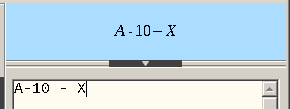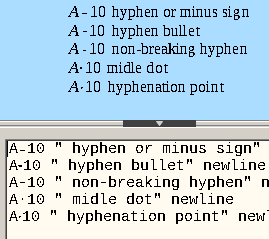Unicode block “General Punctuation” starting at U+2000 contains many “dashes” but they are wider than U+002D HYPHEN MINUS:
- U+2010 HYPHEN (probably looking exactly the same as U+002D)
- U+2012 FIGURE DASH, as wide as a digit
The others are even wider.
You could have a try with U+2043 BULLET HYPHEN (which has not the “bullet” property despite its name but I think this is irrelevant in your case) but it is usually thicker than common hyphens.
I don’t know of a character being officially narrower than a hyphen.
To show the community your question has been answered, click the ✓ next to the correct answer, and “upvote” by clicking on the ^ arrow of any helpful answers. These are the mechanisms for communicating the quality of the Q&A on this site. Thanks!


